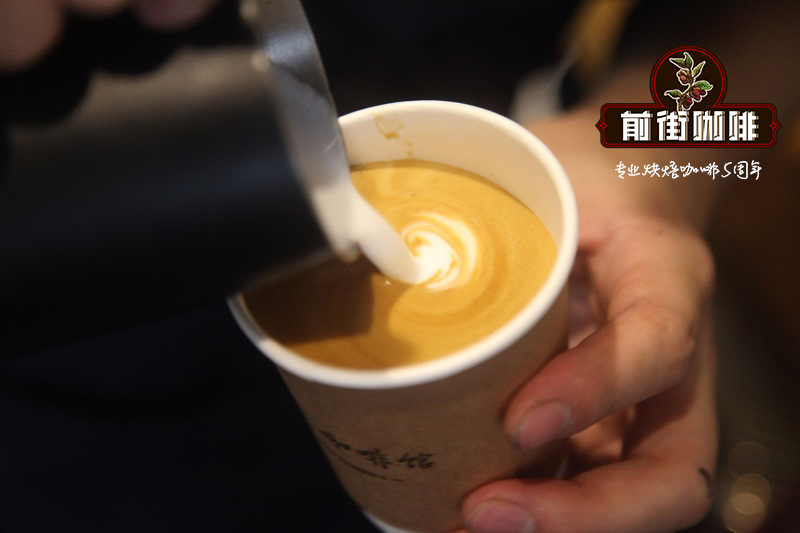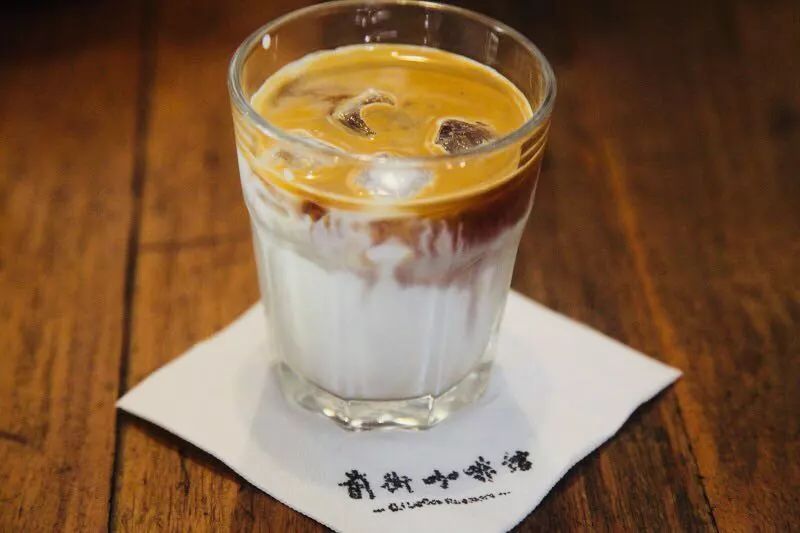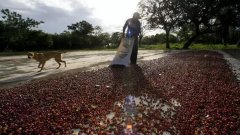Vietnam egg coffee making method what is Vietnam egg coffee? Vietnam dripping coffee

Professional coffee knowledge exchange more coffee bean information please follow the coffee workshop (Wechat official account cafe_style)
Speaking of Vietnam, in addition to rice noodles, there is also egg coffee.
When it comes to Vietnamese specialties, coffee must be included in it. However, in the eyes of foreign tourists who are familiar with coffee culture, the coffee in this country is different from their familiar black coffee, latte, Cabo, hand-made coffee, ice drop, etc., which makes them feel familiar (after all, it is all coffee). And something new (because I've never seen it before). It is conceivable that foreigners can't help feeling a little confused and confused about Vietnamese coffee as an economic-cultural product.
In terms of coffee production, Vietnamese coffee beans are often not found on coffee maps common in coffee shops, but Vietnam's coffee export output is among the highest in the world. In terms of drinking method, Vietnamese slow coffee is unique in the world, which is different from the Italian and American coffee that people are familiar with. In terms of consumption, drinking coffee in Vietnam is affordable, and coffee stalls with simple seats can be seen everywhere on the side of the road, which has nothing to do with the high-end consumption of coffee like Starbucks. These familiar and novel positioning makes Vietnamese coffee a difficult commodity to find a clear positioning (although the beans produced in Vietnam are not much different from those from other parts of the world). Therefore, in order to understand it, we might as well put aside the existing understanding of coffee, go directly to this country with strong coffee flavor, and explore the unique coffee culture nurtured by the people in Vietnam from the perspective of coffee production and consumption.
There is no doubt that Vietnam is a major producer of coffee, mainly concentrated in the central Xiyuan volcanic laterite plateau at an altitude of about 500m to 1100 m. More than a hundred years ago, the French found that the soil and climate here were suitable for the production of coffee, so they brought the seeds of this high-end drink here, and the development of coffee farms spread one after another throughout the central mountains, and the output was also considerable. The coffee trees in Vietnam are very different from those in Taiwan, where there are few fruits. In addition, the rich aroma and nectar of pure white coffee flowers also produce another coffee additional product-coffee flower honey. Since coffee beans are produced locally, they can of course be bought at a cheaper price, but coffee is still unaffordable for ordinary people like the expensive brewing utensils used by the French colonists.
There is no doubt that Vietnam is a major producer of coffee, mainly concentrated in the central Xiyuan volcanic laterite plateau at an altitude of about 500m to 1100 m. More than a hundred years ago, the French found that the soil and climate here were suitable for the production of coffee, so they brought the seeds of this high-end drink here, and the development of coffee farms spread one after another throughout the central mountains, and the output was also considerable. The coffee trees in Vietnam are very different from those in Taiwan, where there are few fruits. In addition, the rich aroma and nectar of pure white coffee flowers also produce another coffee additional product-coffee flower honey. Since coffee beans are produced locally, they can of course be bought at a cheaper price, but coffee is still unaffordable for ordinary people like the expensive brewing utensils used by the French colonists.
For ordinary Vietnamese citizens, whether they like coffee or not, "making an appointment for coffee" and "going to a cafe" seem to run through the social, heart-to-heart, entertainment and artistic activities of their lives. Coffee is not only a drink, but also an exact cultural symbol. Because it is a cultural code, some cafes and cafes have become precious memories of personal life, and even become labels of a certain historical period.
For the Vietnamese people, it is a pity that this kind of drink, which is deeply rooted in the western food culture, does not drink. Since the beginning of the 20th century, clever Vietnamese have developed various methods and tools for making coffee. From coffee bags and socks in overseas Chinese noodle shops like making tea one pot at a time to phin coffee (a special metal filter) brewed by individuals, drinking utensils have evolved from drinking coffee from plates to glasses to high-grade porcelain. At the same time, coffee ingredients are also constantly innovating. Because fresh milk is rare (Vietnam does not raise dairy cows) and it is not easy to preserve it in a hot climate, we switch to condensed milk; without high-grade fresh cream, we come up with egg coffee full of milk foam. Coffee drinking places also follow the Mediterranean and Italian style, and generally prefer the casual style of drinking coffee and chatting while drinking coffee on the street side, so you can find a cup of delicious coffee everywhere from the street side to the high-end restaurant, from the civilian to the rich. You can enjoy coffee anytime, anywhere. The above four developments have also made coffee a national drink for the Vietnamese, a drink that everyone can afford and can enjoy everywhere, which also makes the drinking style of coffee in Vietnam unique.
Egg coffee, as the name implies, is to add eggs to coffee, why add eggs? This is because milk was a difficult ingredient to preserve and hard to obtain in the early days of shortage in Vietnam, so Mr. Nguyen Giang, who originally worked as a bartender at Sofitel Legend Metropole Hanoi, developed a coffee recipe that uses egg yolk to replace milk.
Most of the egg coffee is cream-yellow bubbles. When mixed with the coffee at the bottom, it tastes as soft as a milkshake, without the fishy smell of raw eggs, nor the milky taste of ordinary coffee, but it has a cake-like aroma, which is very interesting.
Maybe we can have a drink at home!
[basic ingredients] for making egg coffee
Coffee
Egg * 1
1 tablespoon of sugar
Condensed milk * 1 tablespoon
1 tablespoon of milk
A coffee cup and a platter
[production method]
Step 1: prepare a cup, put it into a shallow dish, and add hot water to the plate.
This action is the final help to ripen the flavor of the material that will be mixed below.
Step 2: make a cup of Vietnamese coffee
Vietnamese coffee or your favorite coffee, preferably robusta coffee with a strong flavor, can taste the bitterness of coffee and the sweetness of egg coffee at the same time.
Step 3: prepare the yolk
Separate the egg whites from the yolks and install the yolks separately.
Step 4: mix the egg yolk with 3-5 of the material
After mixing, stir well and beat until foamy and sticky.
Step 5: first pour half a cup of coffee into the coffee cup
Add the mixture in step 4 and stir evenly.
Step 6: pour the remaining half cup of coffee into a warm coffee cup
After mixing evenly, the egg coffee is finished.
Important Notice :
前街咖啡 FrontStreet Coffee has moved to new addredd:
FrontStreet Coffee Address: 315,Donghua East Road,GuangZhou
Tel:020 38364473
- Prev

Illustration | A guide to making layered lattes needs to be signed.
There is a common sense that if you want to make a beautiful latte, you should pour the milk into the espresso, not the other way around. But what happens the other way around? This makes another kind of latte: layered latte (layere)
- Next

100-year-old Arida Manor-Solar Iron pickup Fine Coffee taste characteristics sharing of brewing parameters
Professional coffee knowledge exchange more coffee bean information please follow Coffee Workshop (Wechat official account cafe_style) Panama Elida Estate Panama Alida Manor producing area: Panamanian Poquet Manor: Alida Manor elevation: 1850 meters breed: tin truck treatment method: sun 01 | production area introduction Poquet Boquete is Chiriki province C.
Related
- Beginners will see the "Coffee pull flower" guide!
- What is the difference between ice blog purified milk and ordinary milk coffee?
- Why is the Philippines the largest producer of crops in Liberia?
- For coffee extraction, should the fine powder be retained?
- How does extracted espresso fill pressed powder? How much strength does it take to press the powder?
- How to make jasmine cold extract coffee? Is the jasmine + latte good?
- Will this little toy really make the coffee taste better? How does Lily Drip affect coffee extraction?
- Will the action of slapping the filter cup also affect coffee extraction?
- What's the difference between powder-to-water ratio and powder-to-liquid ratio?
- What is the Ethiopian local species? What does it have to do with Heirloom native species?

